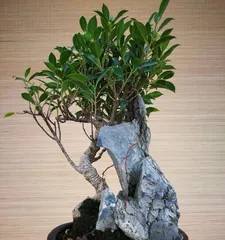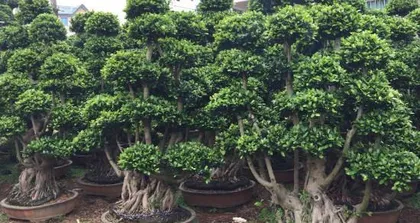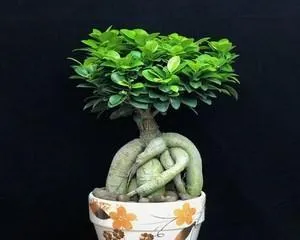In today's high-pressure life, more and more people are enjoying growing green plants at home to add more color to their lives. Today, I will introduce you to a plant that is very suitable for home gardening—the Ficus bonsai.

I. Choosing the right variety of Ficus for bonsai cultivation
To select a suitable Ficus variety for bonsai, you need to first understand its characteristics and form, such as leaf shape, habits, size, branch shape, bark, and flowers and fruits.
II. Preparing suitable soil and pots for Ficus bonsai
After selecting the Ficus variety, we also need to prepare suitable soil and pots for the Ficus bonsai. A healthy Ficus tree needs sufficient water and nutrients; the soil should be fertile, loose, and well-draining, while the pot should be one with good ventilation and drainage.

III. How to plant a Ficus bonsai
After preparing the soil and pot, we can start planting the Ficus bonsai. First, you need to take the Ficus seedling out of its original container, then place its roots in the new pot, add fertile soil, and water it thoroughly.
IV. How to water a Ficus bonsai
The growth of a Ficus bonsai requires adequate water, but it should not be overwatered. It is best to water thoroughly in the morning and evening, but avoid letting the water overflow the pot's bottom.
V. How to fertilize a Ficus bonsai
Fertilizer is very important for the growth of a Ficus bonsai. We can apply organic fertilizer once a month or use chemical fertilizers as a supplement.

VI. How to prune a Ficus bonsai
Pruning a Ficus bonsai can be done by methods such as cutting back, topping, trimming branches, and thinning leaves. Pruning can make the Ficus bonsai more aesthetically pleasing and also help the roots become more stable.
VII. How to prevent and control pests and diseases for Ficus bonsai
During the cultivation of a Ficus bonsai, it is necessary to pay attention to preventing and controlling pests and diseases. Methods such as pesticides, biological agents, and cultural practices can be used.
VIII. How to manage a Ficus bonsai
In the management of a Ficus bonsai, it is important to perform regular pruning, watering, and fertilizing. At the same time, attention should be paid to ventilation and preventing excessive sunlight exposure.
IX. How to appreciate the beauty of a Ficus bonsai
After properly caring for the Ficus bonsai, we can appreciate its beauty. Its branches and leaves fork and grow lushly, adding a touch of green to the home.
X. The form and habits of the Ficus bonsai
Due to its beautiful form, suitable habits, and simple care, the Ficus bonsai has become a favorite plant for many home gardening enthusiasts.
XI. Care tips for Ficus bonsai
When caring for a Ficus bonsai, we need to pay attention to many aspects. For example, sunbathing time, watering methods, fertilizing time, pruning timing, and so on.
XII. Application scenarios for Ficus bonsai
The application scenarios for Ficus bonsai are very wide and can be used in living rooms, offices, commercial places, etc. They not only have a decorative effect but can also bring a sense of life to the space.
XIII. The cultural connotation of Ficus bonsai
Ficus bonsai has a deep cultural connotation in traditional Chinese culture. It can represent wealth and nobility, as well as longevity and good fortune.
XIV. Future development trends of Ficus bonsai
Due to its unique growth habits and simple maintenance, Ficus bonsai has great development potential in the future. We believe that in the future, Ficus bonsai will become the first choice for more and more home gardening enthusiasts.
Conclusion: Through the introduction of Ficus bonsai, we have learned how to plant and care for this beautiful green plant. It not only beautifies the environment but can also provide life assistance, such as lowering indoor temperatures and purifying the air. If you want to create a green home, Ficus bonsai is an excellent choice.